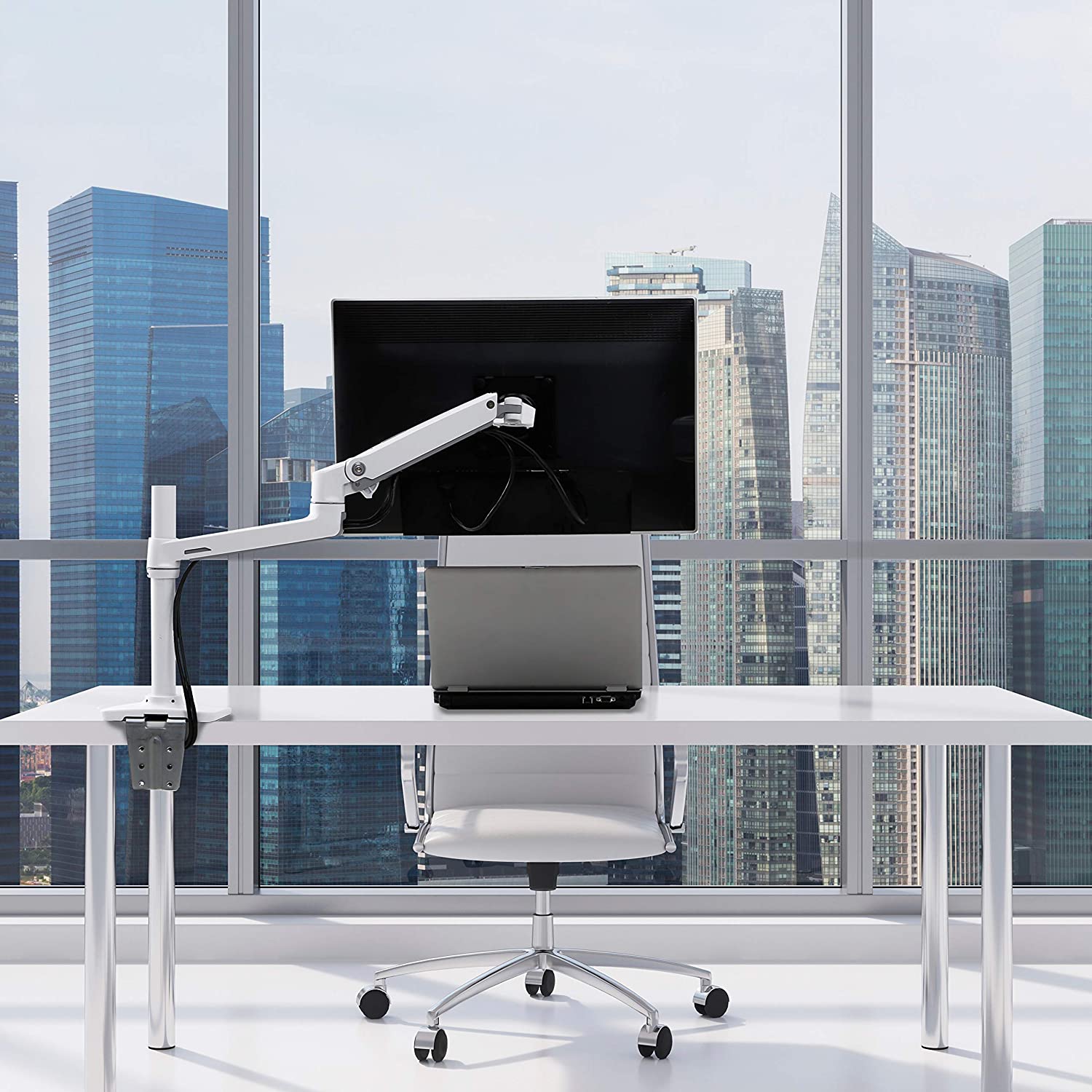
Monitor Arm: The Comprehensive Guide
In the realm of modern workspaces and ergonomically designed environments, the emphasis on device placement is profound. While monitor mounts have been an essential component in optimizing the position of our screens, the monitor arm has emerged as an equally indispensable tool.
Let’s unravel the intricacies of monitor arms and understand their significance in the current scenario.
What Are VESA Monitor Arms?
A Monitor Arm, sometimes referred to as flexible monitor stands or VESA monitor arms, are mechanical devices designed to adhere to the VESA mounting standard. This standard ensures compatibility between the screen and the arm. Unlike fixed mounts, VESA monitor arms offer a greater degree of flexibility, allowing users to effortlessly adjust their screen’s height, depth, and angle to cater to varying needs. These arms play a pivotal role in workspace ergonomics, ensuring users maintain a comfortable posture while reducing strain.
Why Choose a Monitor Arm Over a Traditional Mount?
- Dynamic Flexibility: The major highlight of a monitor arm is its dynamic adjustability. With an arm, you can effortlessly pivot your screen from landscape to portrait, tilt it up or down, and move it closer or farther from you. This feature is particularly beneficial for designers, architects, and other professionals who need to view their work from different angles.
- Space Conservation: Monitor arms elevate screens off the desk surface, freeing up valuable desk real estate. This space can be utilized for other essentials, giving your workspace a neater and clutter-free appearance.
- Enhanced Ergonomics: Proper screen placement can significantly reduce neck and back strain. Monitor arms allow for precise positioning, ensuring the screen is at eye level and promoting a natural, upright posture.
- Multiple Monitor Setups: Many monitor arms are designed to hold two or more screens. This is ideal for multitaskers and professionals like stock traders, programmers, and graphic designers who work on multiple applications simultaneously.
Factors to Consider When Choosing a Monitor Arm
- Weight Capacity: Ensure the arm can comfortably hold the weight of your monitor. Overburdening can lead to wear and tear, affecting the arm’s longevity.
- Range of Motion: Depending on your needs, you might require an arm with a 360-degree swivel, tilt functionality, or height adjustability. Confirm the specifications before purchase.
- Mounting Options: While some arms clamp onto the desk’s edge, others might require drilling. Depending on your workspace’s setup and restrictions, choose accordingly.
- Integrated Cable Management: Some arms come with built-in channels or clips to manage cables, ensuring a tidy and organized desk.
- Aesthetic Value: The design and finish of the monitor arm can either complement or clash with your workspace. Whether you prefer a sleek metallic finish or a subtle black design, there’s an arm out there that matches your aesthetic.
In conclusion, while monitor mounts serve as a stable base for our screens, monitor arms take it a step further by offering unparalleled flexibility and customization. Whether you’re setting up a professional workspace or designing a home office, considering the incorporation of a monitor arm can drastically improve functionality and comfort. For further insights on optimizing your digital workspace, continue exploring at VesaMounts.com.
Check out our Blogs on Monitor Mounts
